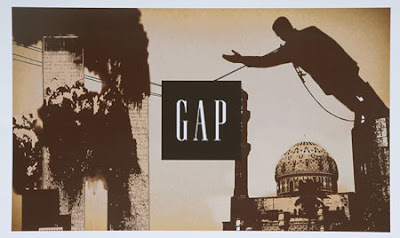
Bobby Sands 1954 - 1981
Republican Movement
Offset, circa 1981
Ireland

Solidarity With All Prisoners
www.prisonerhungerstrikesolidarity.wordpress.com
Digital, 2011
Oakland, California

Prison Strike
Diego
2011
Los Angeles, California

Support the Pelican Bay Hunger Strike
Kevin “Rashid” Johnson
Red Onion State Prison
2011, Homewood, Illinois
CSPG’s Poster of the Week focuses on Hunger Strikes to protest prison conditions.
In 1981, ten men starved themselves to death inside the walls of Long Kesh prison in Belfast, North Ireland, while attempting to make Margaret Thatcher's government recognize them as political prisoners rather than common criminals. Bobby Sands, member of the Provisional Irish Republican Army (IRA), was the leader of the hunger strike. He was 27 when he died.
On July 1, 2011, another prisoner hunger strike began in California. Prisoners in the Security Housing Unit (SHU) at Pelican Bay State Prison (California) initiated a hunger strike to protest the cruel and inhumane conditions of their imprisonment—including one of the most tortuous isolation regimes in the world. Pelican Bay is a super max facility dedicated to holding prisoners in long-term solitary confinement and extreme sensory deprivation.
Despite the fact that federal courts, mental health professionals, and international human rights monitors repeatedly have pointed out the devastating impact of isolation on human beings, the State of California continues to consign hundreds of prisoners, sometimes for decades, to torturous conditions that federal judge Thelton E. Henderson concluded “may well hover on the edge of what is humanly tolerable.” Tragically, because they feel their efforts to challenge these conditions through administrative and legal channels have failed, hundreds of prisoners have put their bodies and their lives on the line.
At one point there were 6,600 prisoners in 13 prisons participating in the strike. “This massive and inspiring act of solidarity and people power across prison-manufactured & exacerbated racial and geographic lines has dumb-founded the CDCR. While the daily numbers of hunger strikers fluctuates, the CDCR is certainly under-estimating how many people inside prison are participating in and supporting this strike.”
June 20, 2011 - www.prisonerhungerstrikesolidarity.wordpress.com
In order to keep prisoners even further divided, guards pursue an infamous policy of race-baiting to encourage self-segregation in gangs. Despite these challenges, the inmates there have overcome their differences to struggle for dignity and improved conditions. Inmates participating in this movement to resist abhorrent conditions have demonstrated unity across prison-manufactured racial and geographical lines.
The hunger strikers have five core demands:
1. End Group Punishment & Administrative Abuse – This is in response to PBSP’s application of “group punishment” as a means to address individual inmates rule violations. This includes the administration’s abusive, pretextual use of “safety and concern” to justify what are unnecessary punitive acts. This policy has been applied in the context of justifying indefinite SHU status, and progressively restricting our programming and privileges.
2. Abolish the Debriefing Policy, and Modify Active/Inactive Gang Status Criteria -
Perceived gang membership is one of the leading reasons for placement in solitary confinement.
The practice of “debriefing,” or offering up information about fellow prisoners particularly regarding gang status, is often demanded in return for better food or release from the SHU. Debriefing puts the safety of prisoners and their families at risk, because they are then viewed as “snitches.”
The validation procedure used by the California Department of Corrections and Rehabilitation (CDCR) employs such criteria as tattoos, readings materials, and associations with other prisoners (which can amount to as little as greeting) to identify gang members.
Many prisoners report that they are validated as gang members with evidence that is clearly false or using procedures that do not follow the Castillo v. Alameida settlement which restricted the use of photographs to prove association.
3. Comply with the US Commission on Safety and Abuse in America’s Prisons 2006 Recommendations Regarding an End to Long-Term Solitary Confinement – CDCR shall implement the findings and recommendations of the US commission on safety and abuse in America’s prisons final 2006 report regarding CDCR SHU facilities as follows:
End Conditions of Isolation (p. 14) Ensure that prisoners in SHU and Ad-Seg (Administrative Segregation) have regular meaningful contact and freedom from extreme physical deprivations that are known to cause lasting harm. (pp. 52-57)
Make Segregation a Last Resort (p. 14). Create a more productive form of confinement in the areas of allowing inmates in SHU and Ad-Seg [Administrative Segregation] the opportunity to engage in meaningful self-help treatment, work, education, religious, and other productive activities relating to having a sense of being a part of the community.
End Long-Term Solitary Confinement. Release inmates to general prison population who have been warehoused indefinitely in SHU for the last 10 to 40 years (and counting).
Provide SHU Inmates Immediate Meaningful Access to: i) adequate natural sunlight ii) quality health care and treatment, including the mandate of transferring all PBSP- SHU inmates with chronic health care problems to the New Folsom Medical SHU facility.
4. Provide Adequate and Nutritious Food – cease the practice of denying adequate food, and provide a wholesome nutritional meals including special diet meals, and allow inmates to purchase additional vitamin supplements.
PBSP staff must cease their use of food as a tool to punish SHU inmates.
Provide a sergeant/lieutenant to independently observe the serving of each meal, and ensure each tray has the complete issue of food on it.























